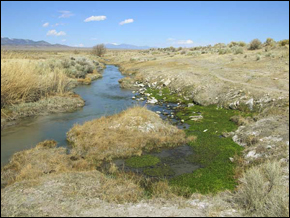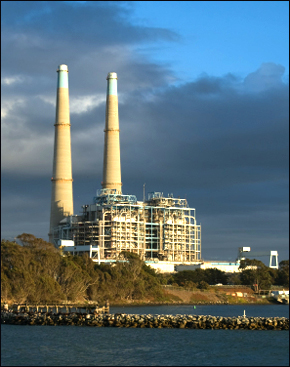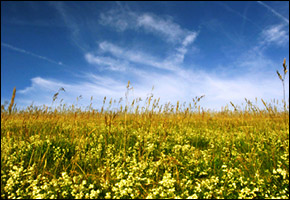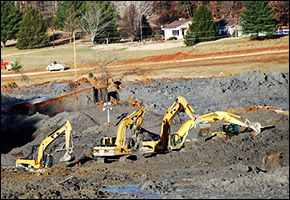Nevada and Utah: Desert Aquifer Dispute in Snake Valley
 A highly disputed bill sits on the desk of Utah Governor Gary Herbert that would allow the construction of a 300-mile pipeline to pump 16 billion gallons of groundwater from the Snake Valley aquifer to as many as 120,000 households in Las Vegas, Nevada.
A highly disputed bill sits on the desk of Utah Governor Gary Herbert that would allow the construction of a 300-mile pipeline to pump 16 billion gallons of groundwater from the Snake Valley aquifer to as many as 120,000 households in Las Vegas, Nevada.
The Snake Valley is 100 miles long, and the aquifer below it flows from the Great Salt Lake, Utah to Death Valley, Nevada. In 2004, Congress put both states in charge of settling disputes over the division of the aquifer.
Many organizations have stakes in the settlement. Most eager for an agreement is the Southern Nevada Water Authority, who hopes to build 300 miles of pipelines to pump 16 billion gallons of water annually from the Snake Valley aquifer to quench the thirst of growing subdivisions surrounding Las Vegas, according to the Associated Press.
But environmental and medical officials warn that dried desert topsoil could create dust storms that would carry toxic chemicals to local inhabitants.
After four years of negotiations, officials from both states proposed an agreement in August that the groundwater in the aquifer should be split in half.
Differing statistics from Millard and Juab counties in Utah, however, show that the split should be 78 percent for Utah, 22 percent for Nevada, reported Desert News of Salt Lake City.
The fifty-fifty split is based on the assumption that much of the aquifer comes from precipitation run-off from Nevada’s mountains. It is presumed that there is 132,000 acre-feet of water available per year, and the proposed pipeline would distribute roughly half–a projected 50,000 to 60,000 acre-feet per year–to Las Vegas. According to The Salt Lake City Tribune, one acre-foot of water– literally one acre of land submerged in one foot of water, or 325,000 gallons–is enough to equip two households for one year. The proposal submitted by Millard County divides the aquifer by its position within the Great Salt Lake groundwater flow system, reports the Associated Press.
Last week the Associated Press reported that opponents to the plan include the 3,500-member Utah Medical Association (UMA) as well as the 200-member Utah Physicians for a Healthy Environment (UPHE). The UMA warns that there is not enough data on the potential air-quality damage that could occur if the dessert topsoil turns to dust. The dangers listed by the UPHE include public exposure to increased carcinogens such as mercury and asbestos-like erionite as well as radiation from 900 nuclear tests performed in Nevada, in addition to valley fever from fungus spores, reports The Salt Lake City Tribune.
“There are unique threats in the soil in the west desert that will have potentially profound impacts on public health beyond particulate matter,” reads an official letter sent last week from the UMA to Herbert. “These are some of the most toxic substances known and yet this agreement does nothing to assess or mitigate these health risks.”
Additionally, the Associated Press reported the discovery of a new cave species endemic to Great Basin National Park, Nevada which could “give ammo” to adversaries of the Snake Valley aquifer water plan.
Even if Governor Gary Herbert signs the final proposal from the Utah Department of Natural Resources expected to reach his desk within the next month, construction of the SNWA pipeline must wait until 2019.
During this decade, more environmental impact studies would be conducted on the underground aquifer to determine how much water is available. According to The Salt Lake City Tribune, the Utah Geological Survey expects the water-table to drop 100 feet if the proposed pumping passes.
Furthermore, Snake Valley is not the only potential pipeline deal that would see resource exports leaving Utah–a proposed nuclear power plant facility in Emery County would use Green River water supplies to sell electricity across the border to utilities in Page, Arizona, as well as to power the proposed Lake Powell pipeline. On the southwestern border with Wyoming, a pipeline from Flaming Gorge Reservoir would cart 250,000 acre-feet to Colorado.
is a Traverse City-based assistant editor for Circle of Blue. She specializes in data visualization.
Interests: Latin America, Social Media, Science, Health, Indigenous Peoples









Leave a Reply
Want to join the discussion?Feel free to contribute!